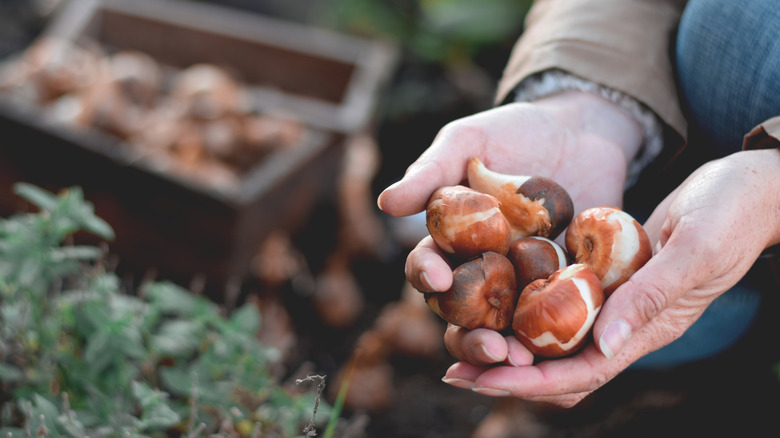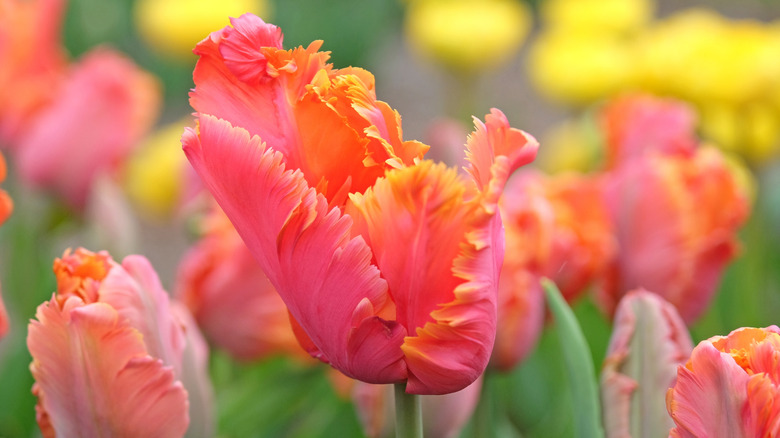The Stunning Bulb You Can Plant This Fall For A Tropical Vibe Come Spring
Gardening keeps us aware of seasonal transitions, and the passage from autumn into winter can be one of the glummest. There's no shortage of stunning fall-blooming flowers out there, but their vibrant colors and fragrances are short-lived. Even if you grow perennials in winter, these qualities aren't as easy to come by. Still, fall is a great time to dream, and who could ask for a better vision than feathery, rosy-pink or cherry-colored blooms with orange tips that resemble a tropical sunset? Make this dream a reality come spring by planting tulip (Tulipa) bulbs of the "Amazing Parrot" cultivar.
"Amazing Parrot" tulips belong to a family of parrot tulip cultivars known for large blooms and petals that have a feathered or even curly appearance. Like other tulips, they grow from bulbs you plant in the fall, so they require patience but are well worth the wait. In USDA Hardiness zones 3 through 7, bury these tulip bulbs in a sunny spot during autumn and expect the cup-shaped flowers to unfurl in the late spring.
In warmer climates, spanning from parts of zone 7 through zone 9, you'll need to buy cold-treated bulbs and grow these parrot tulips as annuals, which means digging up and replacing the bulbs when the foliage wilts each year. In colder climes, you can treat them as perennial plants, but many people still replace their tulip bulbs (even when it's not strictly necessary) to preserve the flowers' vigor and try out new varieties.
How to plant bulbs for vibrant Amazing Parrot tulips
If you want Amazing Parrot tulips in your garden come spring, plant the bulbs by mid-fall — don't wait until winter, as this is a common mistake everyone makes when growing tulips. Act before the temperatures dip to freezing so the roots can grow as strong as possible. A good guideline is to plant tulips before or during October. This will expose them to the chilling period that they need for the best success and tallest possible stems.
Pick an area of your garden that gets full sun (or is at least mostly sunny) as you plan your fall tulip planting. If you can add in some wind protection, like a nearby tall plant that won't completely overshadow your tulips, their big blooms will be safer once spring arrives. Clustering the bulbs in groups can create a big visual impact, but make sure to space them 6 inches apart and plant them at least 6 inches deep. Keep each bulb's pointed side facing upward as you plant.
Keep the soil well–drained to help your tulip flowers thrive in the garden. Don't let water pool in the soil in late fall and winter or during the plant's growing season, as the bulbs and roots may rot. Adding organic elements to the soil, like mulch or compost, is also wise. After these flowers' fantastic blooming season, leave the foliage alone until it has totally died back, especially if you're growing these tulips as perennials. Cutting them back too soon can reduce the following year's bloom count.

